Can cerebral infarction and cerebral hemorrhage be cured?
Cerebral hemorrhage, the technical term for brain hemorrhage, actually means the same thing, both mean that a blood vessel in the brain has ruptured and blood has flowed out, soaking the brain tissue, resulting in dysfunction and loss of brain tissue.
Cerebral infarction, on the other hand, means that the embolus inside the blood flows to the cerebral blood vessel and blocks the cerebral blood vessel, then the cerebral tissue behind the cerebral blood vessel will be deprived of blood and oxygen, which also leads to the dysfunction of the cerebral tissue and the loss of the cerebral tissue.
Cerebral infarction and cerebral hemorrhage are both classified as strokes (strokes), and both can lead to hemiplegia, limb weakness, speech impairment, sensory impairment, difficulty in swallowing and coughing, and so on.
Mild cerebral infarction and cerebral hemorrhage can have no obvious clinical manifestations, only a small infarction foci in the brain, such as cavernous cerebral infarction, can be found when doing a cranial CT. These minor conditions can be fully recovered, but not every time so lucky, if you do not properly control blood pressure, blood sugar, blood fat, etc., the next time a stroke, may be a massive stroke, then this time it is not possible to cure, because massive stroke when the brain tissue damage is serious, the brain cells are dead one less than one, non-renewable, even if the later and then try to rehabilitate exercise, it is unlikely to be fully recovered as before. It is unlikely to recover completely as before.
Therefore, prevention comes first. To prevent cerebral hemorrhage and cerebral infarction, friends with high blood pressure, diabetes, hyperlipidemia must control their blood pressure, blood fat, blood sugar, etc., and use anti-platelet aggregation drugs, such as aspirin, etc., if necessary.
I looked up some information and a few reports said that 70-80% of stroke patients are cured or partially recovered (you can baidu this sentence), but I can't find the source, I think that although the cure rate of stroke is not so high, but there is still a significant portion of the recovered patients can live and work normally.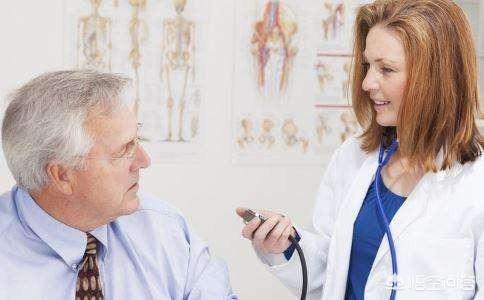
It is understood that there are about 2 million new cases of stroke in China/year, more than 1.5 million deaths from stroke/year, and 6-7 million survivors after stroke (nowadays it is more than 10 million). Surveillance results in the last two decades show that the annual number of stroke deaths exceeds 2 million, with an annual growth rate of 8.7%. And there is a fairly high rate of disability, in the 6-month golden treatment period, relaxation, get active rehabilitation treatment, cure or partial recovery is still possible.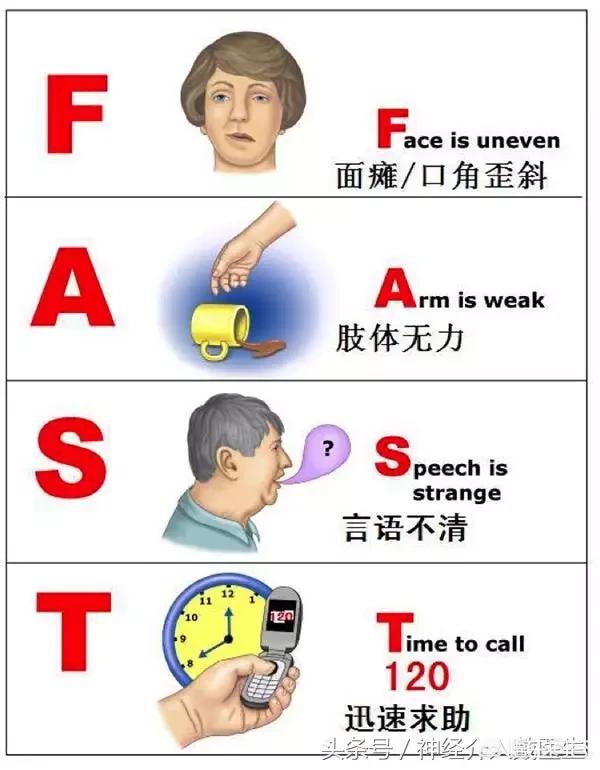
The topic is whether brain hemorrhage and cerebral infarction can be cured. Stroke is the general term for brain hemorrhage and cerebral infarction. The treatment of cerebral hemorrhage and cerebral infarction is completely opposite, but the damage to brain tissue and the recovery after the disease are basically the same.
Whether a stroke can be cured or not is mainly related to the severity of the disease at the onset, the location of the lesion, the speed and measures of treatment, and the later recovery.
1. The severity of the disease at the onset is related to the location of the lesion, if in the important functional areas, a little bit of hemorrhage or cerebral infarction, it is possible to cause serious conditions, such as the brainstem, thalamus, etc., and there are also large vascular lesions, the disease will be serious, and the possibility of healing is much smaller.
2. The speed of treatment and measures, we all know that time is life, time is the brain reason, but in the real face of the time may not be so good grasp, such as ischemic stroke, one of the most important therapeutic measures is thrombolysis, including intravenous thrombolysis, arterial thrombolysis, mechanical thrombolysis, there is an important concept called the time window, are required to be 6 hours or less to get the treatment, the effect is good, the possibility of a cure is quite good. The possibility of cure is quite high. Because after the time window has passed, the brain tissue is already necrotic, even if the blood flows through again, it will not help, so how can it be cured?
3. Post-rehabilitation includes active multi-directional multi-measures, positive, relaxed mindset, maintenance of a healthy lifestyle, and daily exercise in the course of daily rehabilitation, but according to the individual's situation to measure the intensity of their own exercise. In the diet should be light, eat more green natural pollution-free vegetables and fruits, do not eat or eat less greasy spicy food such as fat intestines, doughnuts, spicy hot and so on. In addition to eating therapeutic drugs can be appropriate to supplement the vitamins, proteins and other health products. In life, we should keep a happy mood, control high blood pressure, high blood sugar, quit smoking and drinking, reduce body weight, reduce the risk factors of cerebrovascular disease, and prevent and treat recurrence.
How is it? You think this article is helpful to you, please do not forget to click on the word "attention" and then "like" ah, but also can be forwarded to help other people in need! I am a professional neurosurgeon engaged in the intervention of the doctor, there will be more cerebrovascular disease health knowledge, dry goods "dedication" to you. I will have more health knowledge about cerebrovascular disease to "dedicate" to you.
Can cerebral infarction and cerebral hemorrhage be cured by advanced or conventional medicine?
Strictly speaking cure means cured and no longer controlled by medication; it is essentially impossible to achieve this, and current medicine, both traditional and modern, requires long-term medication to control cerebral infarction and cerebral hemorrhage.
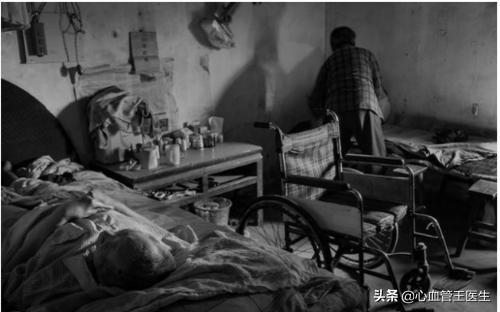
Of course there is also an understanding called stage cure, for example, after cerebral infarction and cerebral hemorrhage with sequelae, after active formal treatment, the patient did not leave any sequelae, then this is called by some people also called a cure. If it is only this kind of limited or stage cure, then it can be realized.
I. Stroke, also called cerebral stroke, is divided into ischemia and hemorrhage.
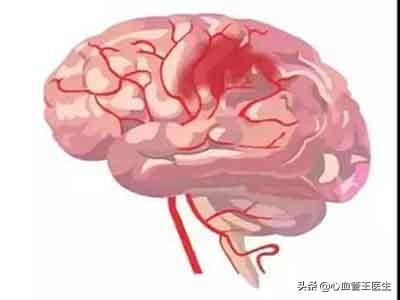
A cerebral infarction is now more formally called a cerebral infarction; a cerebral hemorrhage is more formally called a cerebral hemorrhage.
Cerebral infarction and cerebral hemorrhage are collectively referred to as stroke or also called stroke. Cerebral infarction is a blood clot that blocks a blood vessel in the brain, called an ischemic stroke; cerebral hemorrhage is a rupture of a blood vessel in the brain, called a hemorrhagic stroke.
Cerebral infarction and cerebral hemorrhage sometimes have the same manifestations, both of them may manifest as hemiplegia and aphasia, hemiplegia, distortion of the eyes and mouth and so on. Basically, there is no way to determine whether it is cerebral infarction or cerebral hemorrhage by the external manifestations, and we can only go to the hospital to further determine it accurately by brain CT.
II. If a stage or limited cure can be achieved

We will find that some patients with cerebral infarction or cerebral hemorrhage will suffer from hemiplegia, aphasia, hemiplegia, and distortion of the eyes and mouth at the onset of the disease, but these symptoms will disappear completely after treatment. However, there are still some people who, even after treatment in hospitals, will still be left with sequelae such as hemiplegic aphasia, hemiplegia, distorted mouth and eyes, etc., and will even carry these sequelae for the rest of their lives.
The cause of these sequelae is related to the site of the blockage or hemorrhage on the one hand, and on the other hand, and the most crucial aspect, is time. Whether it is an infarction or a hemorrhage, it is the damage to the brain tissue that leads to the sequelae. If the infarction lasts longer, then the more necrotic tissue there is, resulting in symptoms that may be irreversible.
Therefore, when a cerebral infarction or cerebral hemorrhage occurs, in order to minimize the risk of sequelae or in order to achieve a staged cure, then every second counts, and this is only possible if you arrive at the hospital at the first opportunity and undergo regular treatment.
Third, all strokes require long-term management and are virtually incurable

Strictly speaking, stroke is incurable. Most of the high-risk factors that lead to stroke, whether it is cerebral infarction or cerebral hemorrhage, are high blood pressure, diabetes mellitus, hyperlipidemia, smoking and alcohol abuse, obesity, sedentary lifestyle, unhealthy diet, late nights, high stress, etc., etc., etc.
Even if after a minute and a half, there are no after-effects, but the basis for the blockage or rupture of blood vessels is still in the human body, and if the three highs are not controlled by long-term medication, anti-inflammatory stabilization of plaques, and if there is no long-term healthy life, then cerebral infarction or cerebral hemorrhage will occur again.
So, whether it's a cerebral infarction or a cerebral hemorrhage, it's virtually incurable; but if it's treated aggressively and regularly, then most people probably won't have any after-effects.
In fact, there is no sequelae are not only closely related to the time, but also related to the infarction or hemorrhage site, so, for cerebral hemorrhage or cerebral infarction or to prevent the main, healthy lifestyle, away from tobacco and alcohol, adhere to the exercise, a healthy diet, weight control, to avoid staying up late, a good state of mind, monitoring the three highs, control the three highs; do a good job of these effective prevention of stroke!

With age, human blood vessels will gradually lose their elasticity, thus prone to cerebrovascular diseases such as cerebral infarction and cerebral hemorrhage, which are common diseases in neurology, and their common feature is that both of them can result in dizziness, headache, hemiplegia, aphasia, change in mental state, and even crisis of life. However, cerebral infarction is caused by insufficient blood and oxygen supply to brain tissue due to blockage of blood vessels in the brain, while cerebral hemorrhage is caused by rupture of blood vessels due to high blood pressure, hemangioma, and other reasons, which results in edema around the brain tissue, or compression.
Regarding the treatment of cerebral infarction and cerebral hemorrhage, and the recovery after treatment, it depends on the location of the infarction or hemorrhage, and the size of the infarction or the amount of hemorrhage, as well as the timeliness or otherwise of the treatment. In the case of cerebral infarction, if the infarction area is small, or if the infarction has not reached the functional area, there may not be any obvious clinical symptoms, or there may be mild clinical symptoms such as mild headache. However, if the infarction area is large, resulting in ischemic necrosis of brain tissue, it will cause one side of the limb activity limitation, aphasia and other symptoms, then we should carry out appropriate thrombolytic therapy in the shortest possible time to save brain tissue, which is important for the patient's future recovery.

The same is true for cerebral hemorrhage. A small amount of bleeding can be self-absorbed and may not leave serious after-effects, but if the bleeding is fast and heavy, or if the bleeding occurs in the brainstem and other important parts of the body, hemiplegia, aphasia, and even life-threatening conditions may occur.
Whether cerebral infarction and cerebral hemorrhage can be cured depends on the specific situation. It is possible for patients with milder conditions, and for patients with more serious conditions, after the acute phase, there is still a long recovery period, or even leave lifelong sequelae that are difficult to recover.
Respondent: Chen Yongmiao, M.D.
Welcome to Life Calling for more useful health knowledge.
Hello! Stroke itself is easy to manage, but the after-effects of a stroke cannot be cured. The good news, however, is that with early rehabilitation, many stroke victims can regain their ability to care for themselves.

1、Simple understanding of cerebral infarction and cerebral hemorrhage
They both belong to the cerebrovascular disease, cerebral infarction is because the blood vessels are blocked, cerebral hemorrhage is because the blood vessels burst, collectively known as stroke in Chinese medicine. Although the process is not the same, however, the end result is the same, both cause the brain ischemia, lack of oxygen.

The brain is the supreme command of the human body, and different brain regions, respectively, govern our motor, sensory, and speech functions. Therefore, when we have a stroke where the brain area is more important, then the after-effects are more severe. If the brain area of the stroke is not particularly important, such as a cavernous infarction, then the after-effects will be milder.
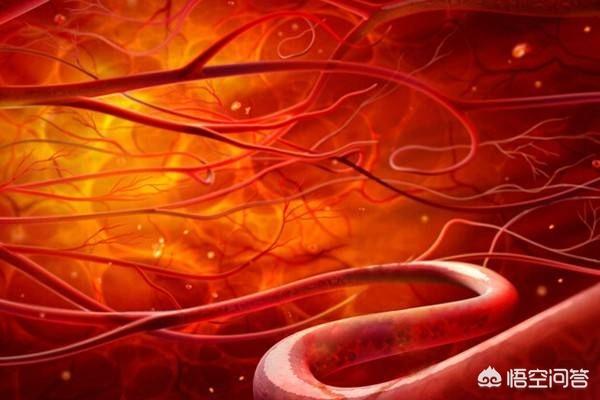
2. Rescue time
In addition to the area of the stroke, the severity of the after-effects is also related to the time of resuscitation. The cells in our brain can only survive for six hours after the onset of ischemia and hypoxia, and once this time is exceeded, there will be widespread death. Therefore, the earlier the resuscitation, the better the prognosis for the stroke patient.
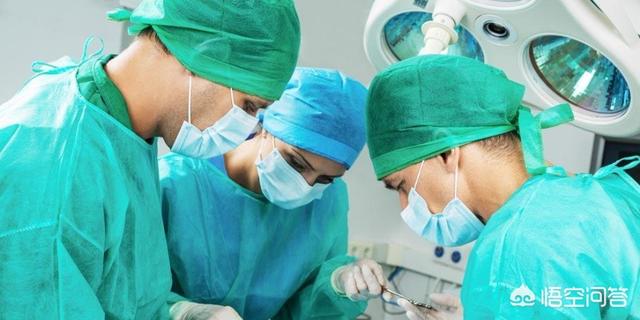
3. Treatment of after-effects
In most cases, the condition of the stroke itself is stabilized after resuscitation. However, the after-effects of a stroke can be lifelong, resulting in a high likelihood of disability and greatly affecting the patient's life.
Take hemiplegia, the most common form of stroke, for example, if no attention is paid to the rehabilitation treatment in the early stage, the joints of the hands will be stiff in the later stage, the fingers cannot move, and the lower limbs will have joint contracture and so on. This directly affects the patient's basic activities such as sitting, standing, walking and eating.
If active treatment is carried out early, the sooner the better, and rehabilitation interventions can be made once the condition is stabilized. The health care provider has seen many such patients, and their future is generally better, with a higher likelihood of regaining self-care.

In summary, strokes are easy to manage and the aftermath requires active rehabilitation. Finally, Nourish wishes you a speedy recovery!
I hope the above suggestions can help you, get more health information, please pay attention to the health care fine-tuning!
cerebral infarctionIt's the brain.Clogged blood vessels form blood clotsCaused by.It is mainly the necrosis of localized brain tissues caused by insufficient blood supply to the brain, ischemia, or lack of oxygen in the brain. The main clinical symptoms are numbness or inability to move the body, uncoordinated movement of the limbs, and slurred speech.
cerebral bruisingfailing agreementBleeding in the brain caused by a sudden rupture of a cerebral blood vessel, the trigger for a brain hemorrhage is often caused when a person is too emotional, or impulsive.Sequelae are mainly characterized by inability to speak clearly, impaired mobility, and inability to take care of oneself.
depending on the situation
Both conditions can be cured at the first onset if they are not particularly serious, because the two types of complications are treated differently due to their different causes. Cerebral infarction requires the expansion of blood vessels to speed up the flow of blood and prevent re-infarction. On the other hand, cerebral stagnation needs to reduce the pressure on the brain and consume appropriate blood clotting medication.
Treatment
Both diseases have a lot of treatment methods, Chinese medicine rehabilitation treatment, Western medicine physical therapy can be, but also can be used in the method of acupuncture to dredge the chakra, according to the clinical triggers and symptoms of each condition to take the appropriate treatment method. It is important to adopt appropriate treatment methods according to the clinical triggers and symptoms of each condition. It is not possible to treat randomly according to one's subjective consciousness, in order to prevent other serious consequences.
(fig.) repercussions
Both conditions have sequelae, and the recovery process is also very important, the patient himself should actively cooperate with the treatment, the family should also give more care and encouragement, in the joint efforts of everyone to achieve the best recovery state.
Eat well and exercise moderately
In both cases, it is necessary to pay attention to the diet, do not eat too much greasy food, and try to eat more fruits and vegetables. Vitamin supplement. You can also eat some health products. Daily rehabilitation exercise should be based on their own physical condition to increase the intensity of exercise. Maintain an optimistic attitude and carry on the rehabilitation treatment.
Hello, everyone! I am Dr. Gay Yanting, a brain surgeon. I specialize in minimally invasive and surgical treatment of cerebrovascular disease brain tumors.
Cerebral infarction and cerebral hemorrhage both belong to the category of stroke, and the current medical level of treatment for cerebral infarction and cerebral hemorrhage should be very standardized and effective.
In both cases, time is of the essence - time is of the essence, and time is of the brain! Especially in the case of cerebral infarction, the best treatment may not be possible once the optimal time has passed. A cerebral hemorrhage is a life-threatening condition that requires timely hospitalization and, in cases of heavy bleeding, surgery.
Most of the cerebral infarction, mild cerebral infarction, can be cured through effective treatment, but must pay attention to control some of the risk factors of cerebral infarction, such as controlling high blood pressure controlling high blood glucose, controlling high blood fat, quitting smoking and quitting alcohol, and eating a light diet and so on.
Severe cerebral infarction, that is to say, cerebral infarction caused by blockage of large blood vessels in the brain, usually has more obvious sequelae, such as hemiplegia, inability to speak, incontinence, and mental decline.
Cerebral hemorrhages are more prone to sequelae, which are the result of damage to brain cell function due to the compression of brain tissue by the clot, as well as secondary edema of brain tissue, which produces noticeable symptoms, or sequelae.
So can a cerebral infarction or cerebral hemorrhage be cured? Is there any after-effects? The two most important factors are to seize the time and active, effective and standardized treatment!
Cerebral infarction and cerebral hemorrhage are collectively referred to as "stroke", also known as cerebral hemorrhage.Both are critical cerebrovascular diseases., can be treated, but the cure relies on one's own level of attention.
To cure cerebral infarction and cerebral hemorrhage, recurrence should be prevented first and foremost!
The fact that the disease has occurred indicates that latent problems such as lesions and risk factors are present, and the two diseases are comparedCerebral infarction has a higher recurrence rate.
As the causes of cerebral infarction are more varied, they are related to various factors such as blood pressure, blood lipids and blood sugar. In particular, daily diet and lifestyle habits cause narrowing of the cerebral arterial blood vessels, which is extremely easy to recur.
cerebral hemorrhageThe onset of the disease is strongly associated with blood pressure, which fluctuates with high ups and downs in vascular rupture, or caused by cerebral aneurysms and vascular malformations, with a relatively low probability of rebleeding.

Cerebral hemorrhage has a higher mortality rate and more aggressive conditions
The mortality rate in the acute phase of cerebral infarction is about 5-15%, while the mortality rate of cerebral hemorrhage is about 20-30%.
The amount of "bleeding" in a patient with cerebral hemorrhage determines the severity of the condition. Cerebral hemorrhage progresses quickly, and as the amount of bleeding increases, it can lead to life-threatening brain herniation.
What can we do to treat strokes?
"Stroke" is a means of prevention as well as a means of treatment.
1. Treatment of high-risk primary diseases
Among them, high blood pressure, high blood sugar, high blood lipids, heart disease, and carotid artery stenosis are all high-risk factors for stroke.
2、Avoid smoking and alcoholism
Nicotine and alcohol are very irritating to blood vessels, accelerating atherosclerosis, promoting platelet aggregation, increasing blood coagulation and viscosity, and increasing the recurrence rate of stroke.
3. Standardized treatment
People who have already had a stroke adhere to standardized treatment, such as controlling blood pressure and blood lipids, antiplatelet therapy, anticoagulation therapy for atrial fibrillation, etc., and maintain a good lifestyle.
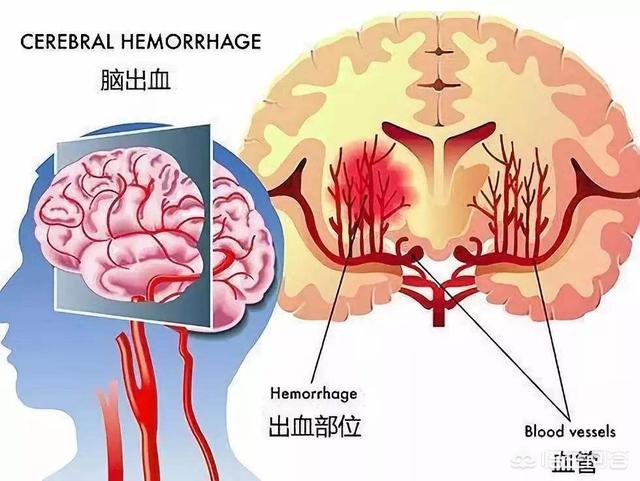
4. Maintaining emotions
Patient morbidity is very closely related to mood, and stroke patients can become anxious and fearful when they fear a recurrence of the disease.
5. Eliminate constipation
"Constipation" is one of the factors leading to the recurrence of the disease, so the diet should be high in vitamins, low-fat and easy to digest light food, do not eat greasy, fried food.
Cerebral infarction and cerebral hemorrhageof patients can actively do rehabilitation within 6 months after the occurrence of the disease, this stage of recovery ability is the best. If there isWhen sequelae such as swallowing disorders, numbness of the limbs, hemiplegia, etc.Prompt medical attention is needed to seek treatment, and the adoption of rational treatment can effectively improve the quality of survival.

For more health knowledge, pay attention to [Kin On Life]!
Feel free to like, retweet, and share.
Doubtful knowledge of cardiovascular disease, you can follow and invite the editor to answer.
Cerebral infarction and cerebral hemorrhage (cerebral hemorrhage) are both what we call strokes, and both, in terms of incidence, areThe incidence of ischemic stroke is higher than that of hemorrhagic stroke, accounting for about 60% to 70% of all strokes.What does stroke mean? It is a group of diseases that cause damage to brain tissue due to ischemia caused by ruptured blood vessels in the skull that bleed or blocked blood vessels, divided intoThe other counterparts are cerebral hemorrhage and cerebral infarction.
Before we talk about whether or not both diseases can be cured, let's recognize both diseases.
- The two diseases mentioned above are the ones that haveinherently differentThe cerebral infarction is due toBrain damage due to ischemiaA cerebral hemorrhage is caused by a ruptured blood vessel.Brain damage due to hemorrhageThey are both destructive to brain tissue. They are both destructive diseases for the brain tissue, and the degree of destruction is more serious in cerebral hemorrhage, and cerebral hemorrhage has a higher rate of disability and death than cerebral infarction. In addition, stroke has the highest mortality rate of any disease in our country, and therefore deserves our utmost attention.Focus on stroke, focus on our health.
- in the wake ofageing,The incidence of stroke is also gradually increasingStrokes occur in45 years and overIt is also characterized by the fact that there are more males than females and more rural residents than urban residents. Cerebral infarction and cerebral hemorrhage are not overnight diseases, they both have a pathogenesis and causes. In summary, the common causes of cerebral infarction and cerebral hemorrhage include:High blood pressure, diabetes and smokingIn addition, cerebral hemorrhage has cerebrovascular lesions such as aneurysm, arteriovenous malformation and anticoagulant and antiplatelet. In addition, cerebral hemorrhage has cerebrovascular lesions and other etiologies such as aneurysms, arteriovenous malformations, amyloid cerebrovascular disease and anticoagulation and antiplatelet etiologies, and cerebral infarction hasAtrial fibrillation, carotid atherosclerosis, low blood pressure, insufficient cerebral blood supplyetc.

- Among their common causesHigh blood pressure, diabetes and smokingallImportant factors affecting vascular quality. Hypertension is the underlying cause of a variety of diseases, and prolonged high blood pressure makes blood vessels continuouslyvitreous degenerationThe risk of rupture increases as its brittleness increases and its elasticity decreases; in addition, it also makes it easy for blood components to aggregate in the intima of blood vessels, leading to atherosclerosis.Sclerotic plaque formation, the lumen of the blood vessels becomes narrowed, increasing the risk of cerebral ischemia. A long history of diabetes is painless, but it is constantly eroding our blood vessels, increasing their fragility and thickening the lining, increasing the risk of bleeding and ischemia.Smoking is a well-known bad habit, is also a factor in the cure of diseases, such as various cerebrovascular diseases. Long-term smoking.The blood is mixed with toxic substances that slowly destroy the blood vessels., likewise the reduction of vascular elasticity and the formation of atherosclerotic plaques. They all participate to a greater or lesser extent in the pathogenesis of cerebrovascular disease.
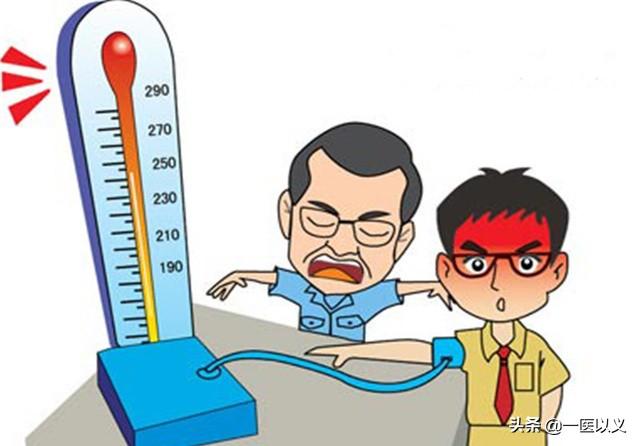
- The clinical symptoms of cerebral infarction and cerebral hemorrhage are not the same. Cerebral infarction tends to develop in quiet and is more likely to develop in the morning, whereas cerebral hemorrhage, on the contrary, tends to develop during activity or after emotional excitement, and both activity and emotional excitement cause significant fluctuations in blood pressure, theProne to cerebral hemorrhage. The clinical symptoms of both diseases are similar, and depending on the severity of the disease, theHeadaches, limb movement disorders, speech disorders, and changes in visual field can occur.etc., and even impaired consciousness. It is difficult to differentiate the two by symptoms alone. First the form of onset can be used as a differentiator, and then theImaging (CT/MR of the head)。
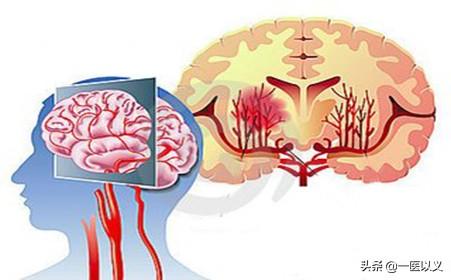
So, can cerebral infarction and cerebral hemorrhage be cured?
1. Cerebral infarction is mainly due toIschemia of brain tissueIf the blood supply to the brain tissue is restored early in the course of the disease, full recovery is possible. If ischemia is prolonged, thecerebral infarctionThe clinical symptoms vary depending on the location of the infarction, which leads to irreversible loss of function. Cerebral hemorrhage isBleeding from ruptured blood vessels, the impact of the blood flow and the destructive effects of the blood's chemicals on the brain tissue, causing the destroyed brain tissue to lose its function. Unlike a cerebral infarction, a cerebral hemorrhageThere's hope for recovery when blood flow is restoredCerebral hemorrhage is a destructive disease, clinically known as "either death or disability", which shows that cerebral hemorrhage is very destructive to brain tissue. So, is it possible to cure a cerebral hemorrhage.
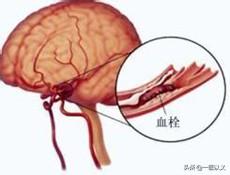
2. Treatment of cerebral hemorrhageThe main concern is to avoid secondary hemorrhage and promote neurological recovery, to avoid further aggravation of the condition. For impaired function, the application ofProtection of brain tissueThe medication to promote brain cell recovery and specialized rehabilitation at a later stage are important means of recovery. Whether it is cerebral infarction or cerebral hemorrhage, theSubsequent rehabilitationIt is only a critical part for the patient. We all know that brain tissue is non-renewable brain tissue, necrotic brain tissue will no longer function, but it can be exercised through the later stages, so that the surrounding brain tissue on the loss of functionProvides a certain amount of compensation, but its effect varies from person to person.
3. For stroke.The cure is only a means of salvation., and nothing is more important than early prevention to reduce the likelihood of neurologic deficits. Or to quote an old saying "Prevention is better than cure.", which is also deeply recognized by a wide range of medical professionals. Indeed, mending is not an end in itself after all.

For both diseases, the means of prevention can also learn from each other, and here are some suggestions on how to do a better job of prevention and prep work.
⑴Strokes are strongly associated with underlying diseases, such as hypertension and diabetes mellitus.. All of the above mentioned underlying diseases have a devastating effect on the blood vessels and cause them to decline in quality. Control of the underlying slows the decline in vascular quality and also plays a part in stroke prevention.
⑵Improvement of lifestyle and cessation of bad habits such as smoking, alcohol abuse and late nights. Although people sometimes enjoy it, it should be controlled. Make it a habit to participate in activities and exercise. Exercise is good for the body, promoting blood circulation and increasing cardiorespiratory function, as well as enabling the regulation of blood vessels.

⑶Eat a healthy diet, reasonable meals, balanced nutrition, meat and vegetable combinations.. For the protection of blood vessels, it is important to eat more green foods and foods rich in vitamins, so that the function of blood vessels is conserved. To emphasize: reducing oily foods, not banning meat, is sometimes easily misunderstood by patients.
(4) To have aGood optimism and positive attitudeTry to avoid things that stimulate significant fluctuating changes in blood pressure, such as major joys and sorrows. For cerebral hemorrhage, happiness and grief are important triggers. Mindset is important, not only in preventing the disease, but also in recovering from it. Patients who have an optimistic mindset recover better than others.
⑸Regular medical check-upsIt should not be ignored, especially for people older than 45 years old. All kinds of skills will be reduced and aging in the middle age, the physical examination can find problems in time to solve the problem and attract people's attention.At least 1-2 medical checkups per year are recommended。

For stroke, treatment is only a means to an end, the ultimate thing to do is to prevent it properly. Take life seriously, take yourself seriously, and life will favor us better.
[Professional doctor to answer your questions
For cerebrovascular disease, many people think that as long as there is no hemiplegia, mobility, life can not take care of themselves, etc. is cured, in fact, whether it is a cerebral infarction or cerebrovascular hemorrhage, it is not possible to cure the same as a cold, because the cold is due to viral bacterial infections caused by viruses and bacteria in the body can be completely cured by killing viruses and bacteria, but cerebrovascular disease is not so.
First of all, the pathological basis of cerebrovascular disease is atherosclerosis, which makes the wall of the blood vessel become thicker and harder, the contraction performance decreases, the lumen is narrowed, the blood flow passes through the amount of reduction, the blood supply to the brain cells decreases, just like the person who sucks in insufficient oxygen will feel suffocated like, the brain cells may be damaged due to the lack of oxygen; if the atherosclerotic formation of the "gruel" collects and forms plaques, the more serious the degree of damage to the brain cells will be. If the "atherosclerosis" formed "atherosclerosis" gathered into a group to form plaque, raised in the lumen of the blood vessel, brain cells ischemia and lack of oxygen will be the more serious degree of brain cell damage will be the more serious degree of brain cell damage.
More seriously, if the plaque on the cerebral blood vessels rupture, the "porridge" lipid material exposed to the blood, equivalent to the inner wall of the blood vessel rupture bleeding, a large number of blood clotting cells platelets will be gathered in the broken place, just like the skin has a wound bleeding, in order to stop the bleeding of the blood will form a blood clot, blood clots will form in the blood vessels.
Thrombus will block the blood vessel to obstruct or even interrupt the blood flow, and the surrounding brain cells will be "suffocated" due to ischemia and hypoxia, and if this situation cannot be relieved in time, the brain cells will be necrotic. Clinically, within 2 hours of the blockage of cerebral blood vessels, if the blood vessels can be unblocked, the "suffocated" brain cells may be saved, and the damage and death of the brain cells will be minimized, and the more the 2 hours exceeded, the more the irreparable damage and death of the brain cells will occur, and the more serious the consequences will be.
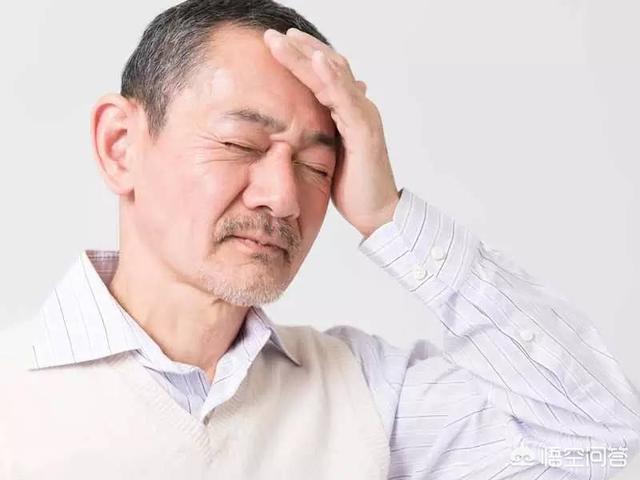
Because the human brain is divided into different functional areas, the consequences of cerebral blood vessel blockage or hemorrhage in different functional areas are not the same. For example, cerebral infarction in the language area of the brain will affect the function of speech, and some people have difficulty in speaking; in the motor area of the brain, the movement of the limbs will be limited; and in the case of respiratory heartbeat area of the brain, respiration and heartbeat will not be able to be carried out, and there is almost no possibility of salvaging the brain.
In summary, once cerebrovascular disease occurs it is impossible to cure, because the atherosclerosis of the cerebral blood vessels and plaques are irreversible, even if there is no after-effects, it is only the cerebral vascular lesions of the site of the blood flow has been promptly unblocked, and the damage to the surrounding brain cells to a lesser extent, can only be said to be the unfortunate luck, but the risk of reoccurrence exists at any time.
Because of this, people who have had a cerebral infarction must prevent the second recurrence, must stop and slow down the progress of cerebral vascular atherosclerosis and plaque, to prevent plaque rupture to form a thrombus, otherwise, another cerebral infarction may occur both in the primary lesion, but also in the new parts of the occurrence of the consequences can not be foreseen by anyone, but in general, every time it occurs, the consequences of the previous will be even more serious.

As for the treatment of cerebral infarction, in addition to the acute phase to dredge the blood vessels as soon as possible to restore blood flow, the treatment of vascular lesions is fundamental, and this is required to last a lifetime, the current level of medical science must rely on the long-term use of drugs such as antihypertensive drugs, antihyperglycemic drugs, hypolipidemic drugs, anticoagulants, etc., and can never be interrupted to take the drug.
Need special reminder: do not think that cerebral infarction, cerebrovascular hemorrhage can be cured, any advocate can be cured that there is no scientific basis for cheating, a lot of older people, especially the occurrence of cerebrovascular disease, eager to be cured can be understood, but only in accordance with the doctor's development of the treatment program is the real treatment, there is no other shortcut to go, do not spend money in vain.
I hope this answer can help you, welcome to click on the attention and leave a message, together to learn and exchange more health knowledge.
This question and answer are from the site users, does not represent the position of the site, such as infringement, please contact the administrator to delete.